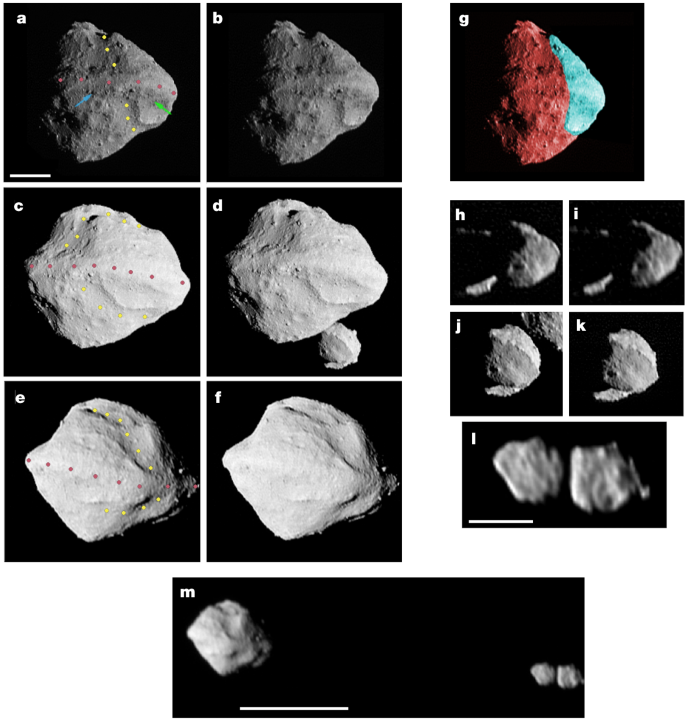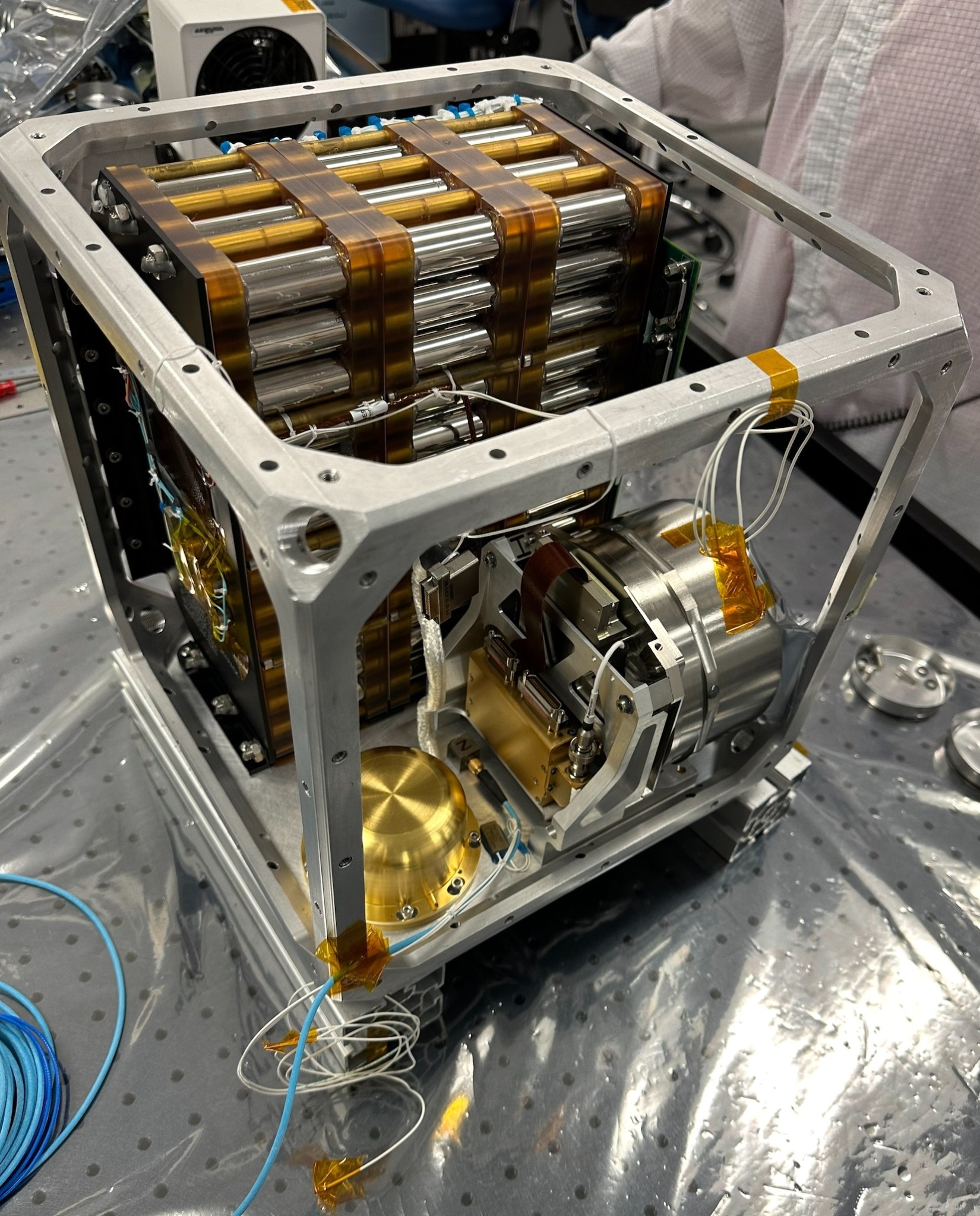2024-05-29 NASA
<関連情報>
- https://www.nasa.gov/solar-system/asteroids/nasa-lucy-images-reveal-asteroid-dinkinesh-to-be-surprisingly-complex/
- https://www.nature.com/articles/s41586-024-07378-0
小惑星ディンキネッシュ(152830)の接触連星衛星 A contact binary satellite of the asteroid (152830) Dinkinesh
Harold F. Levison,Simone Marchi,Keith S. Noll,John R. Spencer,Thomas S. Statler,James F. Bell III,Edward B. Bierhaus,Richard Binzel,William F. Bottke,Daniel Britt,Michael E. Brown,Marc W. Buie,Philip R. Christensen,Neil Dello Russo,Joshua P. Emery,William M. Grundy,Matthias Hahn,Victoria E. Hamilton,Carly Howett,Hannah Kaplan,Katherine Kretke,Tod R. Lauer,Claudia Manzoni,Raphael Marschall,… Yifan Zhao
Nature Published:29 May 2024
DOI:https://doi.org/10.1038/s41586-024-07378-0

Abstract
Asteroids with diameters less than about 5 km have complex histories because they are small enough for radiative torques (that is, YORP, short for the Yarkovsky–O’Keefe–Radzievskii–Paddack effect)1 to be a notable factor in their evolution2. (152830) Dinkinesh is a small asteroid orbiting the Sun near the inner edge of the main asteroid belt with a heliocentric semimajor axis of 2.19 AU; its S-type spectrum3,4 is typical of bodies in this part of the main belt5. Here we report observations by the Lucy spacecraft6,7 as it passed within 431 km of Dinkinesh. Lucy revealed Dinkinesh, which has an effective diameter of only 720 m, to be unexpectedly complex. Of particular note is the presence of a prominent longitudinal trough overlain by a substantial equatorial ridge and the discovery of the first confirmed contact binary satellite, now named (152830) Dinkinesh I Selam. Selam consists of two near-equal-sized lobes with diameters of 210 m and 230 m. It orbits Dinkinesh at a distance of 3.1 km with an orbital period of about 52.7 h and is tidally locked. The dynamical state, angular momentum and geomorphologic observations of the system lead us to infer that the ridge and trough of Dinkinesh are probably the result of mass failure resulting from spin-up by YORP followed by the partial reaccretion of the shed material. Selam probably accreted from material shed by this event.



